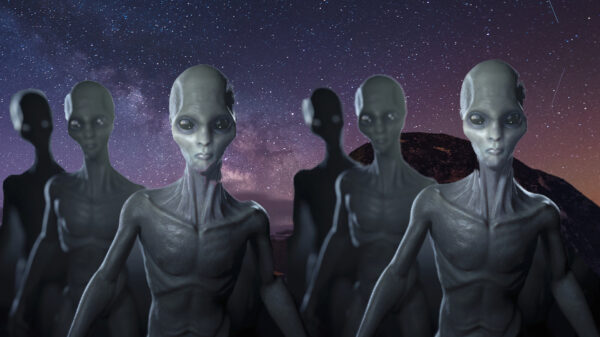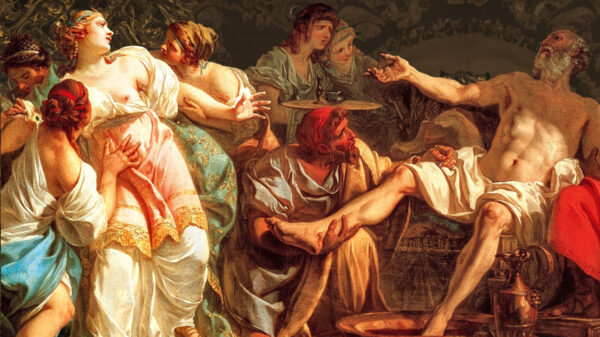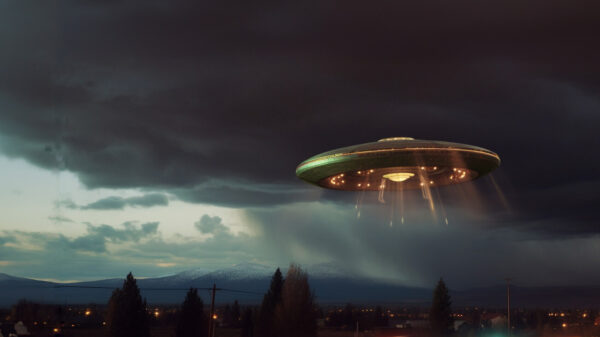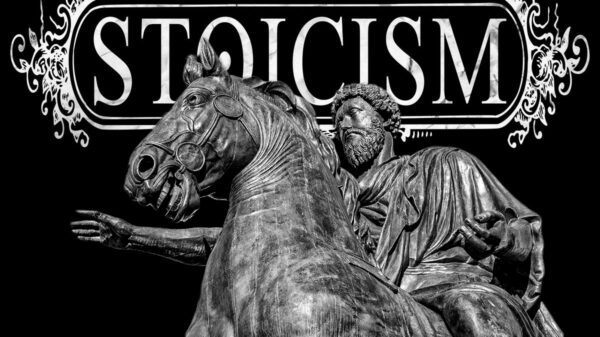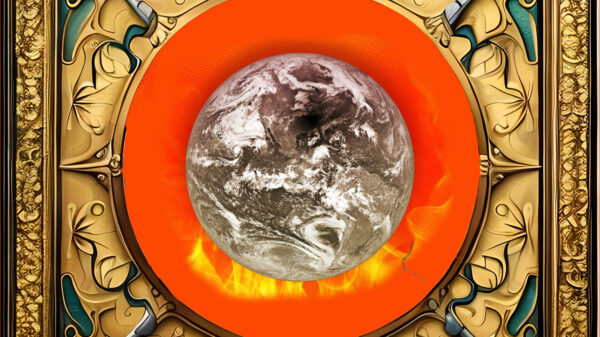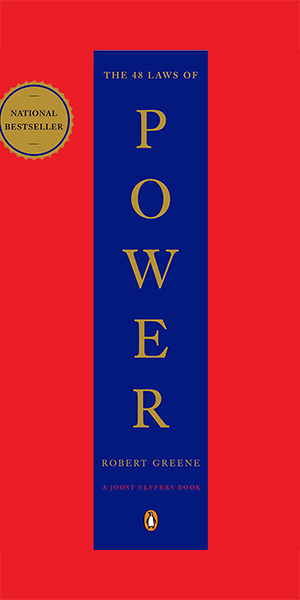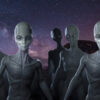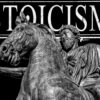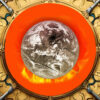Everything, everywhere, all at once things are looking scary
Moloch, the demon, has been a dark and ominous figure in various cultures and religions throughout history. Associated with sacrificial rituals and malevolence, Moloch’s name is etched in the annals of mythology, religious texts, and literary works. For a start, let’s look at origins, history, and literary examples of Moloch, hopefully shedding light on the enduring, and resurgent fascination with this malevolent entity.
Origins of Moloch
Moloch’s origins can be traced back to ancient Canaanite and Semitic cultures. In these ancient societies, Moloch was worshipped as a deity associated with child sacrifice, particularly through burning infants as offerings. Archaeological evidence and ancient texts indicate that Moloch worship was practiced in various regions, including Carthage, where the practice was brought by Phoenician settlers.
The Malevolent Entity in Religious Texts
Moloch finds mention in several religious texts, most notably in the Hebrew Bible (Old Testament). References to Moloch are found in Leviticus and the Book of Jeremiah. The biblical portrayal of Moloch depicts him as a pagan god to whom children were offered as sacrifices. Prophets condemned such practices, considering them abhorrent and an affront to the one true God.
Some literary examples of Moloch include John Milton’s “Paradise Lost”:
In Milton’s epic poem “Paradise Lost,” Moloch appears as one of the fallen angels who rebel against God and are cast down to Hell. Moloch embodies a warrior-like character, advocating for open warfare against Heaven. He is depicted as fierce and eager for revenge, but also ruthless and driven by pride. Milton’s portrayal of Moloch serves as a cautionary tale about the dangers of blind obedience and arrogance.
Allen Ginsberg’s “Howl”: In Ginsberg’s iconic poem “Howl,” Moloch is used as a symbol of the destructive forces of modern industrial society. The poet condemns the dehumanizing effects of capitalism, referring to it as “Moloch whose mind is pure machinery.” The name Moloch here represents the voracious appetite of consumerism, devouring the souls of individuals in the relentless pursuit of profit.
In H.P. Lovecraft’s Cthulhu Mythos: The works of H.P. Lovecraft often feature entities inspired by ancient deities and demons, with Moloch being no exception. In the Cthulhu Mythos, Moloch is described as a fearsome demon, embodying chaos and malevolence. Lovecraft’s depiction of Moloch contributes to the overall atmosphere of cosmic horror prevalent in his stories.
Metaphoric and allegorical instances in current times
In recent times, the concept of Moloch has been interpreted metaphorically, representing modern-day manifestations of malevolence, exploitation, and destructive forces. While not directly related to the ancient deity, the term “Moloch” is used metaphorically to highlight various aspects of contemporary society. Below are some ideas illustrating how Moloch can be perceived in the modern world.
Consumerism and Materialism: In the context of modern society, Moloch can be seen as a symbol of rampant consumerism and materialism. The insatiable hunger for profit and economic growth often leads to the exploitation of natural resources, disregarding the environmental consequences and human costs. This perspective sees Moloch as a driving force behind the unbridled pursuit of wealth, at the expense of ethical considerations and the well-being of individuals and communities.
Technological Advancements and Ethics: The rapid advancement of technology in the modern era has brought undeniable benefits but also raises ethical dilemmas. The concept of Moloch can be applied to situations where technological progress is pursued without due consideration of potential harm or misuse. From concerns about privacy invasion to the development of autonomous weapons, Moloch represents the temptation to sacrifice ethical considerations for the sake of progress and power.
Societal Inequality and Exploitation: Moloch’s presence can also be observed in the glaring social and economic inequalities that persist in many parts of the world. The concentration of wealth and power in the hands of a few at the expense of the marginalized and vulnerable mirrors the ancient theme of sacrificing the weaker members of society. This perspective sees Moloch as a symbol of a system that perpetuates oppression and exploitation for the benefit of the privileged few.
Political and Ideological Extremism: In the realm of politics, the concept of Moloch can be linked to extreme ideologies that advocate for the sacrifice of individual liberties and human rights in the name of a perceived greater good. This could be witnessed in authoritarian regimes or radicalized movements that prioritize their agendas over the well-being and freedoms of their citizens.
Loss of Human Connection and Empathy: Moloch can also be perceived in the erosion of human connection and empathy in the digital age. The relentless pursuit of productivity and efficiency often leads to a detachment from genuine human interaction and compassion. In this context, Moloch embodies the forces that contribute to social isolation and emotional disconnection in modern society.
Present day parallels and connections are striking
Indeed, climate change, nuclear war, mass extinction, and other existential threats to humanity are significant contemporary issues that can also be seen as manifestations of the metaphorical Moloch in modern times.
Climate change, driven primarily by human activities such as deforestation, industrial emissions, and excessive resource consumption, represents a form of modern Moloch. The relentless pursuit of economic growth and the consumption of fossil fuels have contributed to the degradation of the environment, resulting in rising global temperatures, extreme weather events, and loss of biodiversity. This destructive pursuit of short-term gains without considering the long-term consequences can be likened to the sacrificial rituals associated with the ancient deity.
The looming threat of nuclear war and the proliferation of nuclear weapons echo the ominous presence of Moloch in the modern world. The possession of such destructive power by nations can lead to mutual destruction and indiscriminate loss of life, resembling the concept of sacrificing lives for greater ambitions. The unchecked pursuit of military dominance and geopolitical tensions heighten the risk of catastrophic outcomes, making the metaphorical Moloch a potent symbol for this perilous scenario.
The ongoing mass extinction of plant and animal species due to human activities, such as habitat destruction and pollution, represents another form of modern Moloch. The sacrifice of biodiversity for economic gains or lack of awareness of the interconnectedness of ecosystems can lead to ecological imbalances, with severe consequences for the survival of not only various species but also humanity itself.
As technology advances, the development of artificial intelligence (AI) raises concerns about existential risks. While AI holds tremendous potential for progress and innovation, it also poses ethical dilemmas and uncertainties. The potential for AI systems to surpass human control or understanding could inadvertently lead to disastrous outcomes, invoking the idea of sacrificing humanity’s safety and autonomy for the pursuit of technological advancement.
Corollaries in various cultures and mythologies
Baal Hammon (Carthaginian Mythology):
Baal Hammon, worshipped in Carthage and associated with Moloch, shares similarities as both were Phoenician deities related to child sacrifice. Baal Hammon was often depicted as a bull-headed god, representing fertility and prosperity. Like Moloch, he demanded offerings, including the sacrifice of children, as a means to appease and secure favor.
Tiamat (Babylonian Mythology):
In Babylonian mythology, Tiamat embodies chaos and primordial forces, much like Moloch’s association with malevolence. Tiamat is often depicted as a dragon or serpent, representing the destructive forces of nature. Both Tiamat and Moloch symbolize the terrifying aspects of existence that early civilizations sought to understand and appease.
Thanatos (Greek Mythology):
Thanatos, the personification of death in Greek mythology, bears similarities to Moloch’s malevolent nature. Both figures are linked to mortality and the inevitability of sacrifice or death. While Thanatos represents a natural part of life’s cycle, Moloch embodies the darker aspects of death through ritualistic offerings.
Mephistopheles (German Folklore):
Mephistopheles, from German folklore and the literary work of Goethe’s “Faust,” can be compared to Moloch as a metaphorical character representing temptation and malevolence. Like Moloch, Mephistopheles tempts individuals to make morally questionable choices in exchange for power or personal gain.
Mara (Buddhist Mythology):
Mara, in Buddhist mythology, can be seen as a counterpart to Moloch’s malevolent influence. Mara is a demon who represents the forces of desire, delusion, and death, seeking to distract and hinder individuals on their spiritual path. Both Mara and Moloch symbolize internal and external challenges to personal growth and enlightenment.
Ahriman (Zoroastrianism):
Ahriman, the evil spirit in Zoroastrianism, shares similarities with Moloch’s malevolent nature. Both figures embody the forces of darkness, striving to oppose the divine order and spread chaos in the world. Ahriman’s opposition to the supreme deity Ahura Mazda is akin to Moloch’s defiance of the true God in certain religious contexts.
The concept of Moloch in modern times extends beyond its historical religious context to symbolize various existential threats that endanger humanity’s survival. Climate change, nuclear war, mass extinction, and other pressing challenges represent different facets of the metaphorical Moloch—a malevolent force that demands a closer examination of our actions and priorities as a society. By acknowledging these threats and collectively working towards sustainable solutions, we can strive to avert catastrophic consequences and build a safer, more resilient future for humanity and the planet.
Comments
0 comments


